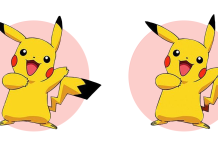What Are Tongue Twisters?
Tongue twisters are phrases or sentences that are usually made up of a series of words all beginning or ending with the same sound. They are designed to be difficult to say quickly, and often people find themselves unable to say them without stumbling or making mistakes. Despite this difficulty, tongue twisters can be a great tool for building speech and language skills, as well as being a bit of fun.
History of Tongue Twisters
Tongue twisters have been around for centuries, with the earliest examples believed to have originated in Europe in the 16th century. They were originally used by actors and singers to warm up their vocal cords and strengthen their articulation and pronunciation skills, but have since become a popular form of entertainment and a fun way to practice speaking and language skills.
The Benefits of Tongue Twisters
Tongue twisters are not only fun, they can also be a great tool for building speech and language skills. Here are some of the ways in which tongue twisters can be beneficial:
•Improving Speech Fluency: As tongue twisters require the speaker to say a series of words quickly, they can help to improve speech fluency.
•Building Pronunciation Skills: As the words in a tongue twister usually all start or end with the same sound, they can help to build pronunciation skills.
•Exercising the Articulators: The tongue, lips, and jaw all play an important role in articulation, language, and speech. Tongue twisters can help to exercise the articulators and develop communication skills.
•Sharpening Memory Skills: As tongue twisters are often quite long and complex, they may help to sharpen memory skills.
•Adding Fun to Language Learning: Although there are many benefits to using tongue twisters for language learning, the main benefit is that they can add some fun to the process.
Famous Tongue Twisters
•She sells sea shells by the sea shore
•Unique New York, unique New York
•How much wood would a woodchuck chuck if a woodchuck could chuck wood?
•Sixth sick sheik’s sixth sheep’s sick
•Fuzzy Wuzzy was a bear, Fuzzy Wuzzy had no hair
•Peter Piper picked a peck of pickled peppers
•How can a clam cram in a clean cream can?
Tongue Twisters through the Ages
Tongue twisters have been around for centuries, and their popularity has withstood the test of time. Here are some examples of tongue twisters from different eras:
• 16th-17th Century: “Theophilus Thistle, the successful thistle-sifter, in sifting a sieveful of un-sifted thistles, thrust three thousand thistles through the thick of his thumb.”- Anonymous (1600)
• 17th Century: “Rubber baby buggy bumpers, Rubber baby buggy bumpers, I said rubber baby buggy bumpers” – Peter Passerell (1699)
• 18th Century: “One-one was a race horse. Two-two was one too. One-one won one race. Two-two won one too.” – Anonymous (1744)
• 19th Century: “I thought a thought. But the thought I thought wasn’t the thought I thought I thought.” – Anonymous (1891)
• 20th Century: “Betty Botter bought some butter, but she said ‘the butter’s bitter!’” – Anonymous (1933)
• 21st Century: “I saw Susie sitting in a shoeshine shop. Where she shines she sits, and where she sits she shines.” – Anonymous (2005)
Tips for Mastering Tongue Twisters
Tongue twisters can be tricky to master, but there are a few simple tips to help you get the hang of them:
•Take it Steady: Don’t rush when trying to say a tongue twister. Start slowly and give yourself time to get each word right.
•Practice: Like any skill, mastering tongue twisters requires practice. Take regular breaks to give yourself a chance to rest, and come back to the tongue twister refreshed.
•Listen to Others: It can be useful to listen to others when practicing tongue twisters. Hear how they are saying the words, and mimic their pronunciation and cadence.
•Break it Down: Break the tongue twister down into smaller pieces and take one chunk at a time. This will make it easier to memorize.
•Speak Out Loud: As with any language skill, it is important to speak out loud when practicing tongue twisters. This will help to build pronunciation and articulation skills.
Tongue Twister Games
Tongue twisters can also be used to create fun games that can be played with others. Here are some examples of tongue twister games:
•Pass it On: This is a classic tongue twister game in which one person starts the game by saying the first part of a tongue twister out loud. The next person then adds the next part and so on, until the entire tongue twister has been spoken.
•Tongue Twister Tug-of-War: This game is best played in pairs or teams of two. Each team is given a tongue twister and must say it until one team is unable to repeat it. The game ends when a team makes a mistake or cannot remember the tongue twister.
•TV Show Challenge: This tongue twister game works best with three or more players. Players take turns reading out a tongue twister, and the other players must attempt to repeat the tongue twister. The first one to make an error or cannot repeat the tongue twister is eliminated. The last one standing is the winner.
Tongue twisters can be a lot of fun, but they also offer real benefits for language learners. Tongue twisters can be used to practice pronunciation, speech, and articulation skills, as well as developing memory and language skills. They can also be used as part of fun games and activities, making them a great way to add some entertainment to language learning.

































